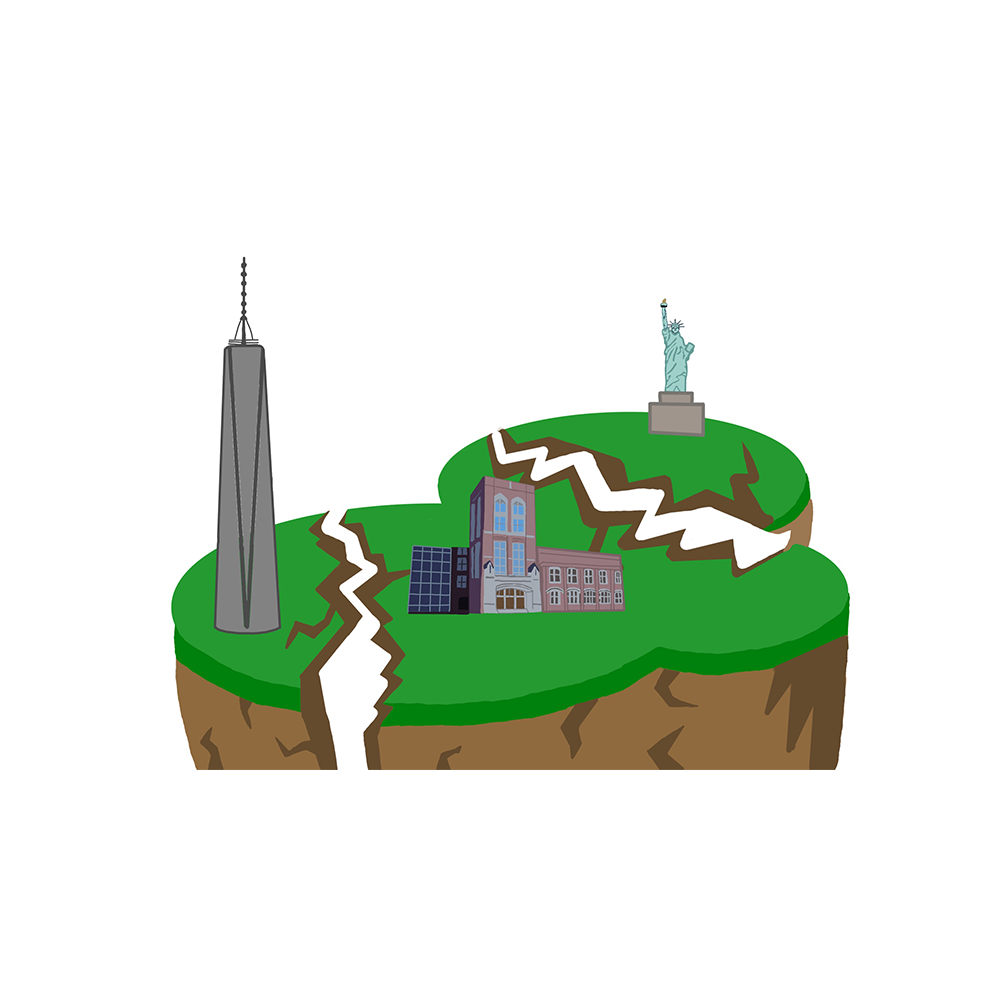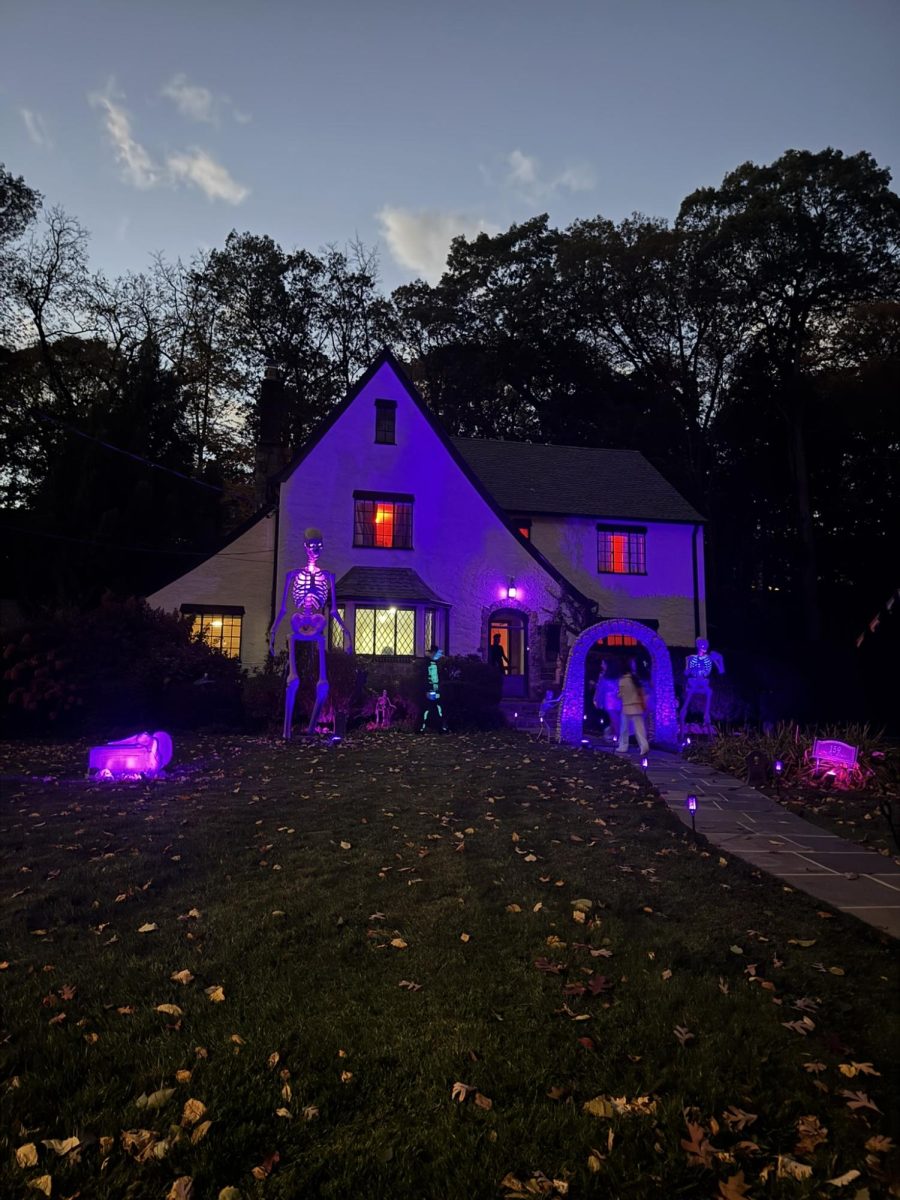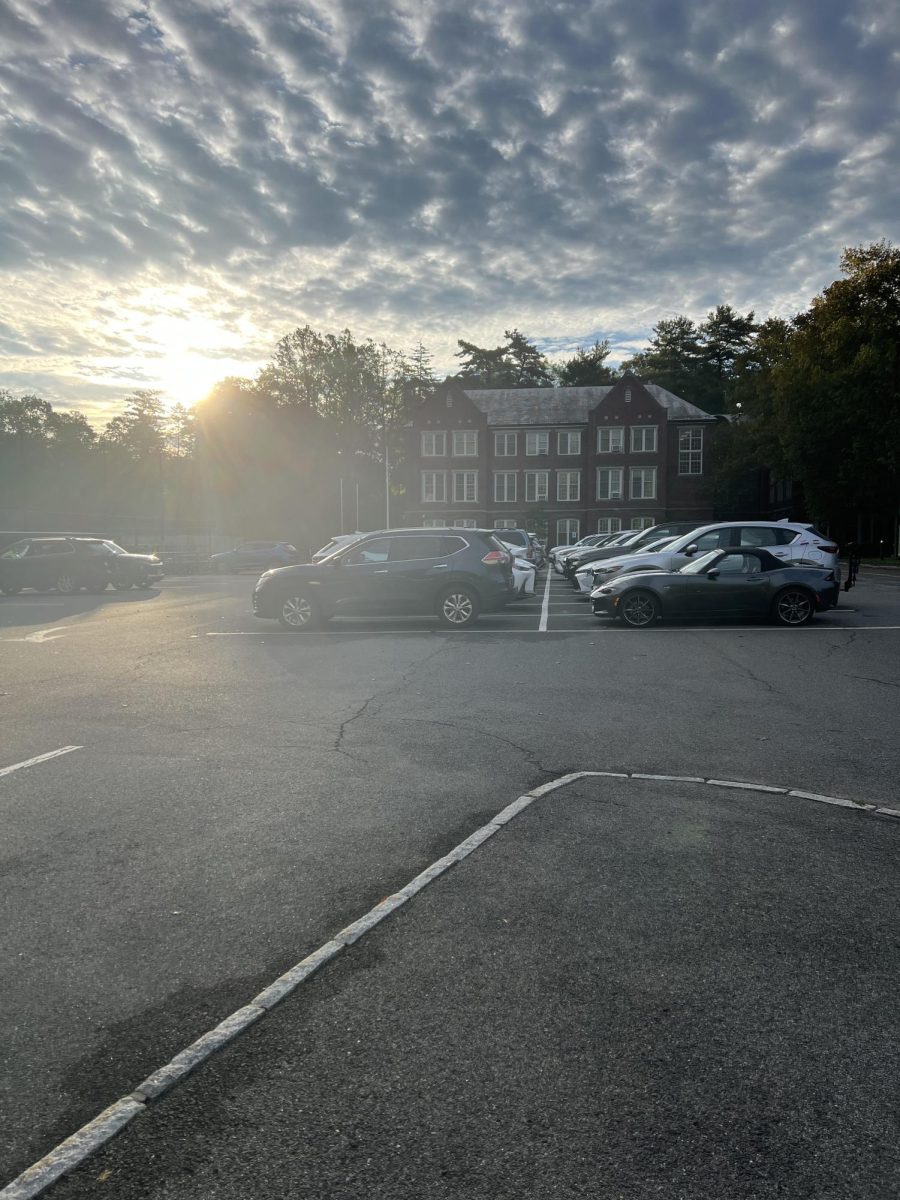“Do you feel that?”
“Is that a large truck?”
“Is someone pushing a heavy cart upstairs?”
“Did something explode?”
“What is THAT?”
These are questions people in New Jersey, New York, Connecticut, and Pennsylvania asked each other at 10:23 a.m. on Friday, April 5, 2024. It had been a quiet early spring morning until a magnitude 4.8 earthquake, with its epicenter in Lebanon, New Jersey, shook the Northeast, causing ground stops at local airports and shock among Tri-state residents, many of whom had never before experienced an earthquake.
Members of Scarsdale High School, along with members of the broader community, were caught off guard by the rumbling and shaking, as many did not initially realize that it was an earthquake.
Following the quake, the Scarsdale school district immediately responded with a “hold-in-place” procedure while personnel at each school assessed the situation. Assistant Superintendent Eric Rauschenbach explained that while the district does not have disaster specific plans, there is a decision-making framework to react to emergencies and that “if the earthquake was more intense, we may have used our evacuation procedures to move students away from damaged or dangerous parts of the buildings.” He went on to note that “each building has a detailed Building Emergency Plan that outlines critical systems, evacuation points, alternate locations for shelter, and reunification plans for parents. With regard to the safest place in buildings, our shelter in place procedure moves students to the most structurally reinforced parts of the buildings as identified in the emergency plans.”
While low-intensity micro-earthquakes that typically aren’t felt happen all the time, this tremor took many by surprise as earthquakes of this magnitude are rare occurrences in this part of the country and are mostly associated with the West Coast along known geological faults such as the San Andreas Fault in California the Cascadia region in the Pacific Northwest. Until last Friday, many people were unaware that there’s a fault line in New Jersey, called the Ramapo Fault, which stems from the Appalachian Mountains and runs 185 miles through New York, New Jersey and Pennsylvania. Additionally, there are five small faults under Manhattan.
Earthquakes commonly occur along fault lines. They happen when tectonic plates push against and slide past each other. Plates are usually locked together but are building stress all the time until the pressure suddenly releases and frees them to slide along fractures in the rock called faults. This allows energy to explode into the surrounding rock. The seismic energy rattles the earth’s surface, releasing waves like ripples on a pond.
The magnitude of earthquakes is measured by the Richter scale, which is a logarithmic scale. This means that for each whole number increase is a tenfold increase in the amplitude of the seismic waves and thus its intensity. Therefore, a magnitude 6 quake is 10 times larger than a magnitude 5. Quake and 100 times larger than a magnitude 4 quake.
While earthquakes in the Northeast happen at only 1% of the frequency as those in California, earthquakes do occur in the northeast and when they are usually felt over a wider area. Last week’s earthquake in the Northeast was the largest in this area in 140 years. In 1884, a 5.2 magnitude earthquake took place in New York City with its epicenter off Coney Island. In 2011, there was a 5.8 earthquake in Virginia that had tremors felt from Washington, D.C. to Boston.
A U.S. Geological Survey team of over 50 scientists and engineers recently determined in a congressionally requested updated National Seismic Hazard Model that nearly 75% of the United States could experience damaging earthquakes in the next century that would put hundreds of millions of people at risk. Additionally, the assessment found that over the last 200 years, 37 states have experienced earthquakes with a magnitude of 5 or more, showing that there is a history of widespread earthquake activity in the U.S. However, there is no way to predict based on reliable data when or where a major earthquake will occur. Scientists can only calculate the probability of a significant earthquake in a specific area in a certain number of years.
Location, depth of the earthquake, and construction of buildings in the affected area determines the amount of damage that is caused by a seismic event. Fortunately, the quake, which shook not only the earth, but people’s nerves, did not do much damage. In areas that have the appropriate equipment, warnings can be broadcast, but only a few seconds before tremors are felt. This might provide enough time to take some precautionary measures like slowing trains or opening emergency doors, but not much else.
In the week following last Friday’s earthquake, there have been 50 recorded aftershocks, the largest of which was a 3.8 magnitude one that originated near Gladstone, New Jersey around 6 p.m. later that same day and was felt as far away as Long Island. It’s normal for aftershocks to continue for up to a week, and possibly longer, after an initial event, with them becoming less frequent and less intense as time goes on.
In areas with high seismic activities, many buildings are designed and constructed to withstand large ground motion. Given the infrequency of major earthquakes in our area, last Friday’s event has prompted many to wonder if there are infrastructure concerns in the event of a larger earthquake. Most skyscrapers such as One World Trade are built with flexibility that would enable it to withstand a moderate level of shaking as they’re already designed to withstand wind. Additionally, many modern high-rises are typically built with dampers in their roofs to absorb shock. In 1995, New York City adopted seismic design provisions for buildings, but many structures in our area are much older than that. Should all older buildings, as well as all bridges and tunnels, be retrofitted to be quake resistant? Homes in earthquake prone areas are now built with shear walls, but that’s not required practice throughout New York State and in towns like Scarsdale, many structures are significantly older that do not have such safety features.
Many of us are uninformed about what to do in the event of an earthquake. There are national earthquake educational programs such as the Great ShakeOut, but they are geared toward the west coast. According to the UGCS, your action should be dictated by whether you are indoors or outdoors, but the primary concern is to steer clear of anything that could fall on you. If you are indoors, the appropriate action is to stay indoors and “drop, cover, and hold on,” making sure to stay away from windows and heavy objects that could fall. If you are outdoors, get into an open space that is away from buildings and power lines. If you are driving, pull over and stop away from traffic and not under a bridge, overpass, trees, light posts, power lines, or signs, and remain in your car. In the event of a more significant earthquake having this basic earthquake knowledge of how to react could prevent harm. Perhaps last Friday’s event could motivate greater earthquake awareness efforts in our area and throughout the Northeast.
















